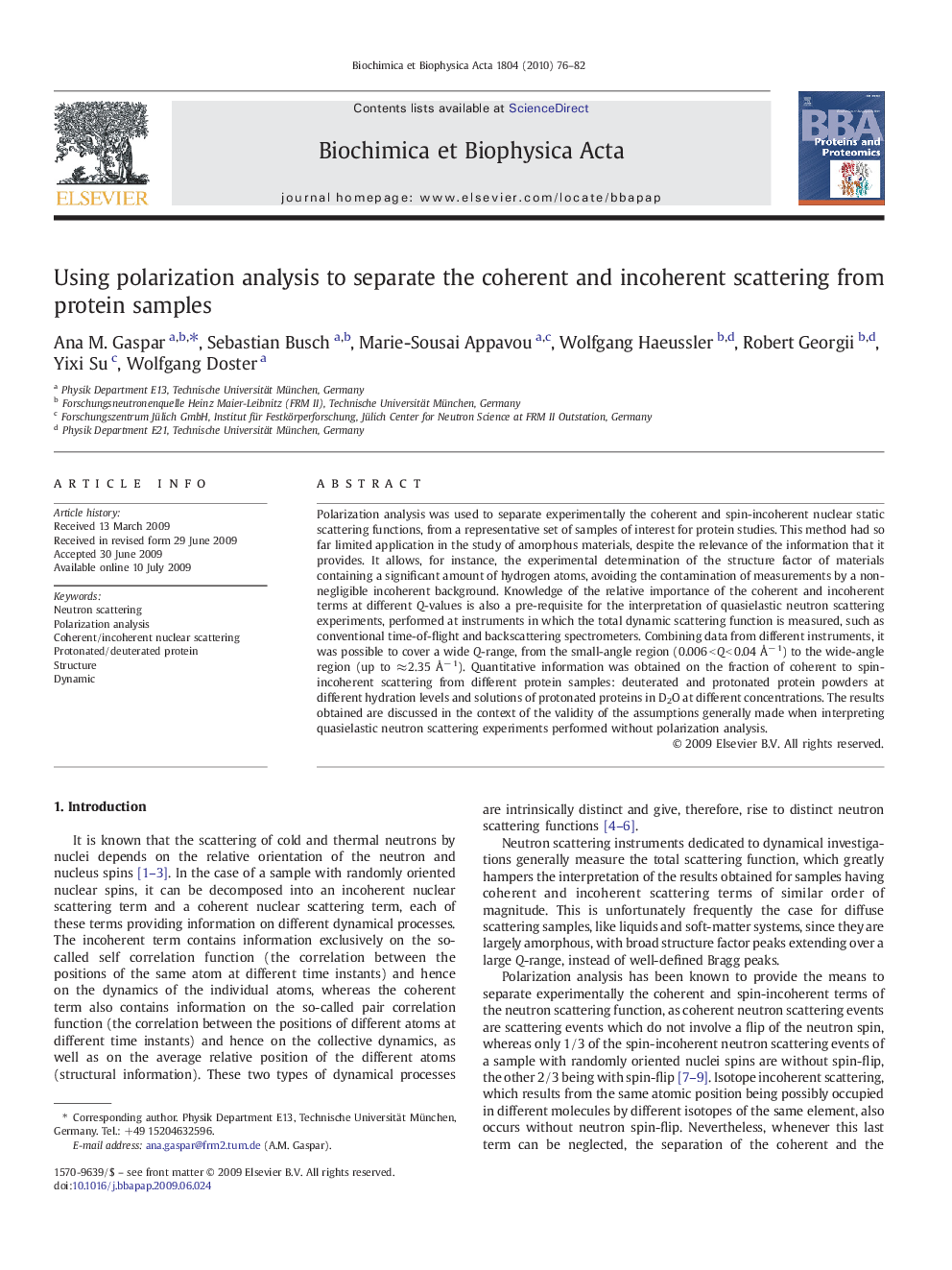| Article ID | Journal | Published Year | Pages | File Type |
|---|---|---|---|---|
| 10536962 | Biochimica et Biophysica Acta (BBA) - Proteins and Proteomics | 2010 | 7 Pages |
Abstract
Polarization analysis was used to separate experimentally the coherent and spin-incoherent nuclear static scattering functions, from a representative set of samples of interest for protein studies. This method had so far limited application in the study of amorphous materials, despite the relevance of the information that it provides. It allows, for instance, the experimental determination of the structure factor of materials containing a significant amount of hydrogen atoms, avoiding the contamination of measurements by a non-negligible incoherent background. Knowledge of the relative importance of the coherent and incoherent terms at different Q-values is also a pre-requisite for the interpretation of quasielastic neutron scattering experiments, performed at instruments in which the total dynamic scattering function is measured, such as conventional time-of-flight and backscattering spectrometers. Combining data from different instruments, it was possible to cover a wide Q-range, from the small-angle region (0.006Â <Â QÂ <Â 0.04Â Ã
â 1) to the wide-angle region (up to â 2.35 Ã
â 1). Quantitative information was obtained on the fraction of coherent to spin-incoherent scattering from different protein samples: deuterated and protonated protein powders at different hydration levels and solutions of protonated proteins in D2O at different concentrations. The results obtained are discussed in the context of the validity of the assumptions generally made when interpreting quasielastic neutron scattering experiments performed without polarization analysis.
Related Topics
Physical Sciences and Engineering
Chemistry
Analytical Chemistry
Authors
Ana M. Gaspar, Sebastian Busch, Marie-Sousai Appavou, Wolfgang Haeussler, Robert Georgii, Yixi Su, Wolfgang Doster,
